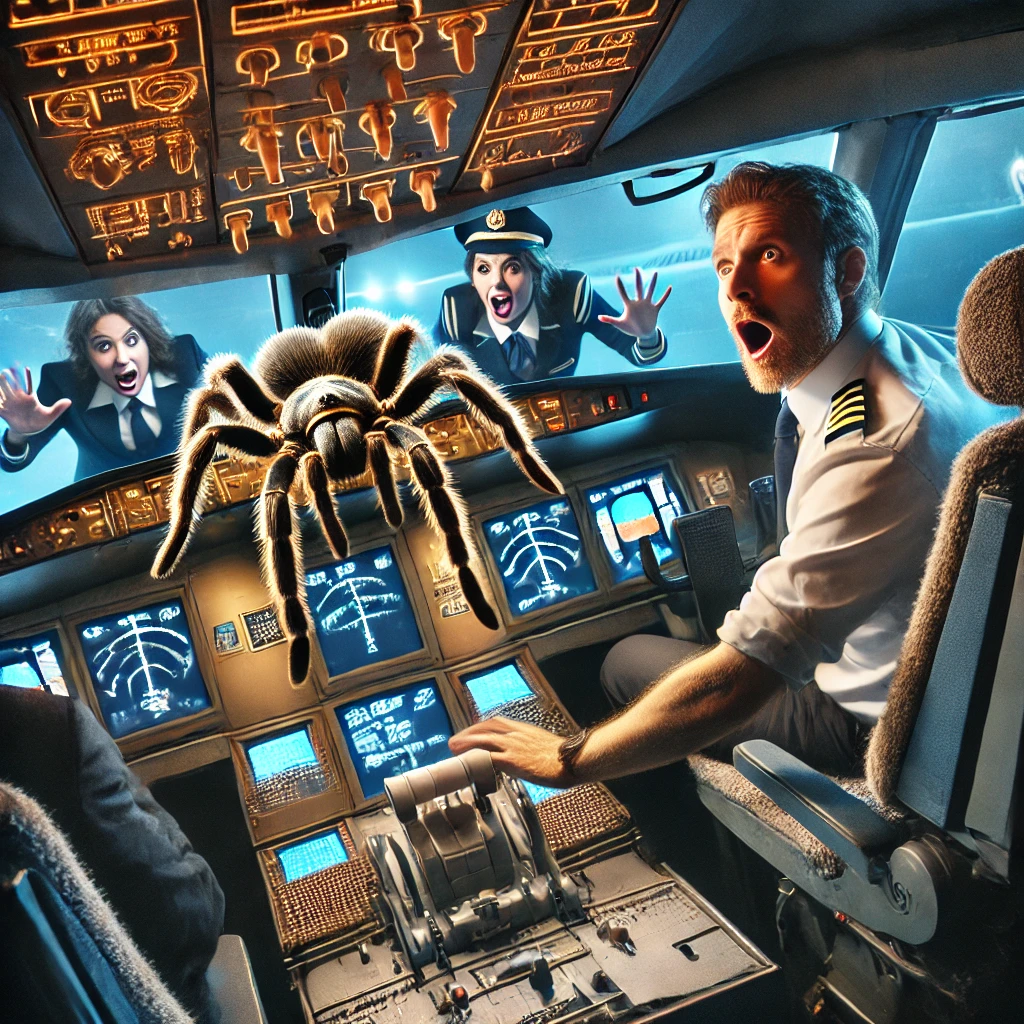
A shocking mid-air incident unfolded when a pilot, allergic to spiders, was bitten by a stowaway tarantula while flying to Spain. The unexpected encounter created panic in the cockpit, raising concerns over flight safety and medical emergencies in the air.
A Terrifying Encounter at 30,000 Feet
Passengers aboard the international flight to Spain were unaware of the drama unfolding in the cockpit when the pilot suddenly experienced an allergic reaction mid-flight. Reports suggest that a tarantula had somehow made its way onto the aircraft, hiding in an unsuspecting spot before emerging and biting the captain.
Tarantulas are typically non-aggressive, and their bites are not deadly to humans. However, for someone with a spider allergy, even a minor bite can trigger serious reactions, including swelling, breathing difficulties, and anaphylaxis. Fortunately, the flight crew was trained for emergencies and took immediate action to stabilize the pilot’s condition.
Emergency Measures in the Sky
Realizing the gravity of the situation, the co-pilot assumed full control of the aircraft while cabin crew members provided first aid to the affected pilot. Onboard medical supplies, including an epinephrine injection (EpiPen), were administered to manage the allergic reaction until landing.
Passengers were informed about a possible emergency landing, but thanks to the quick response of the crew, the situation remained under control. The pilot managed to stay conscious and responsive as the flight continued safely toward its destination.
How Did the Tarantula Get on the Plane?
The presence of a tarantula onboard raises several questions regarding aviation security and pest control. Experts suggest that the spider may have entered the plane through cargo shipments, hidden in baggage, or even been accidentally brought aboard by a passenger. Airlines typically conduct thorough checks, but small creatures can sometimes evade detection.
Flight Crew’s Swift Response Saved the Day
Upon landing in Spain, medical personnel were already on standby to assess the pilot’s condition. He was transported to a nearby hospital for further observation and treatment. Sources confirm that he is now stable and recovering well.
A spokesperson for the airline praised the professionalism and composure of the crew, emphasizing their ability to handle high-pressure situations with efficiency. Aviation experts also highlight the importance of comprehensive training for in-flight medical emergencies, ensuring that airline staff are prepared for such rare but serious incidents.
Are Spider Incidents on Planes Common?
While rare, instances of spiders or other small creatures sneaking onto aircraft have been reported before. Similar cases include scorpions stinging passengers mid-flight or snakes making unexpected appearances. Airlines continue to refine their pest control measures, but given the complexity of global air travel, occasional incidents remain unavoidable.
Lessons Learned and Preventive Measures
This unusual event highlights the need for:
- Enhanced cargo and baggage inspections to prevent unwanted passengers.
- More advanced in-flight medical kits, especially for handling severe allergic reactions.
- Additional training for flight crews in handling medical and animal-related emergencies.
Final Thoughts
The pilot’s quick recovery and the crew’s outstanding response turned what could have been a tragic situation into a testament to professional crisis management in aviation. While an unexpected tarantula bite at 30,000 feet may sound like something out of a thriller, it underscores the unpredictable nature of air travel and the importance of preparedness.
For now, the pilot is taking some well-earned rest, and airlines are reviewing safety protocols to prevent similar incidents in the future. Travelers can take comfort in knowing that airline crews are trained to handle all kinds of surprises—even ones with eight legs.





